These fascinating tropical American natives come in a wonderful variety of sizes, shapes and foliage colours.
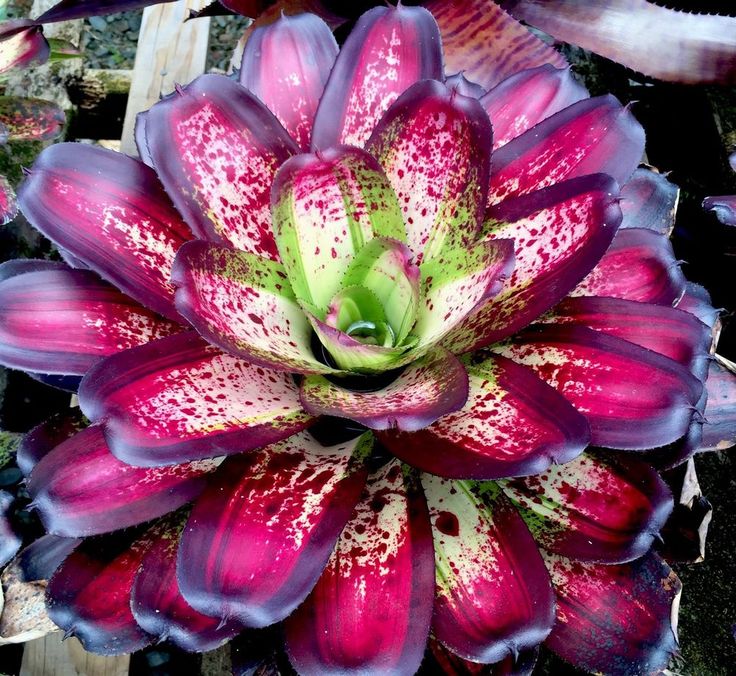
They seem very strange and exotic, but one of our most common fruits, the pineapple, is actually a bromeliad.
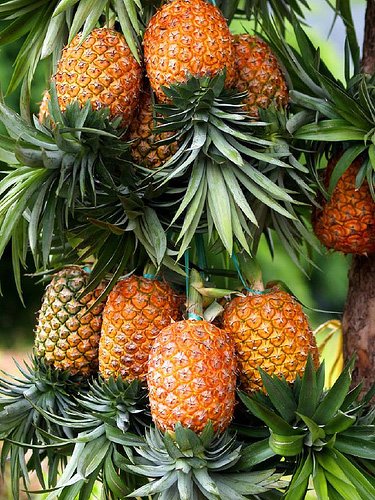
Many bromeliads are epiphytes (ie they live on other plants but do not parasitise those plants), living up in the forks of tree branches and surviving mainly on the moisture and nutrients they obtain from the air. However there are bromeliads for every situation
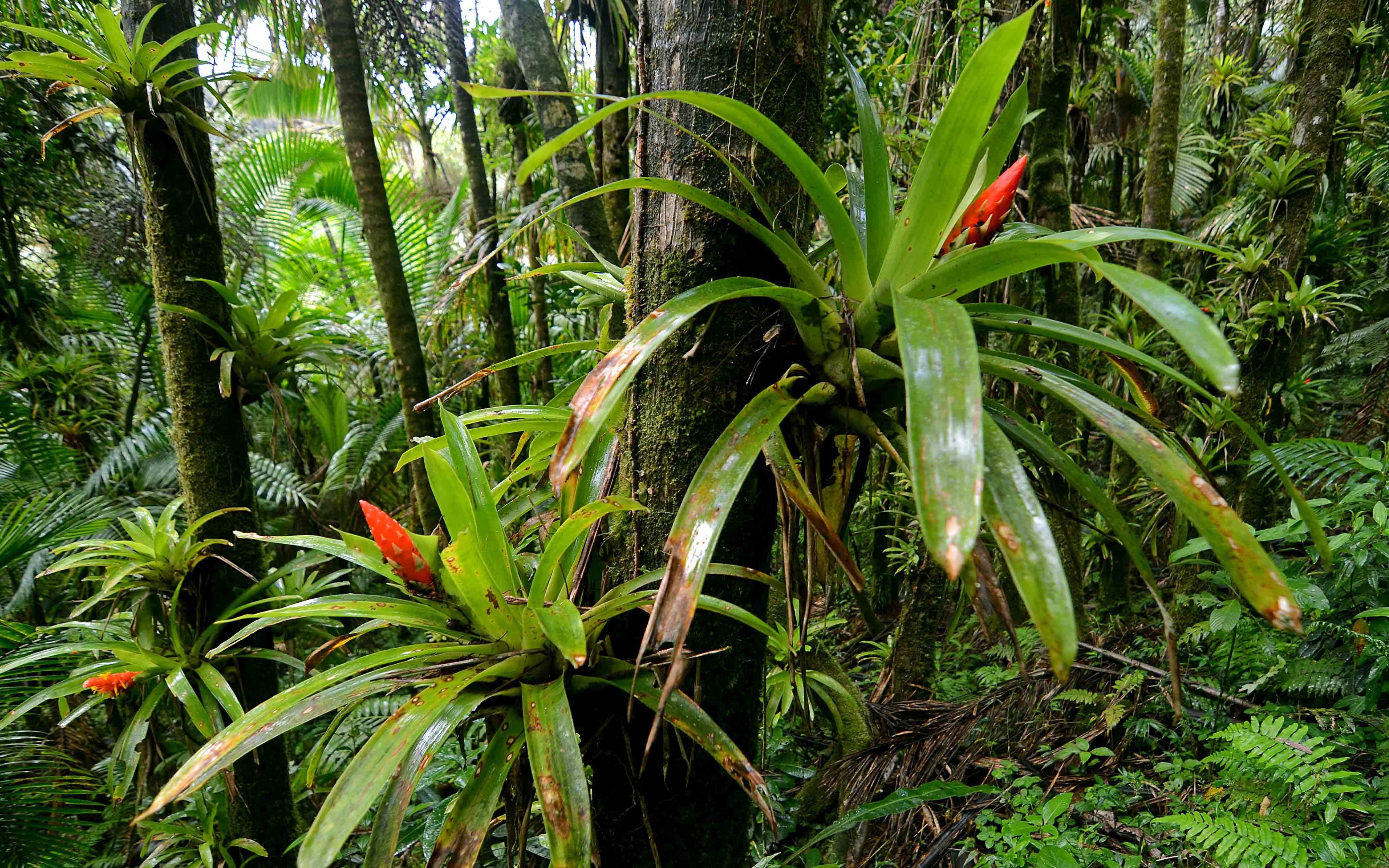
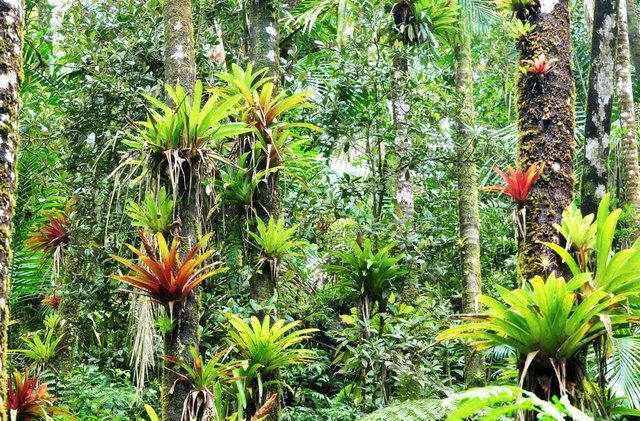
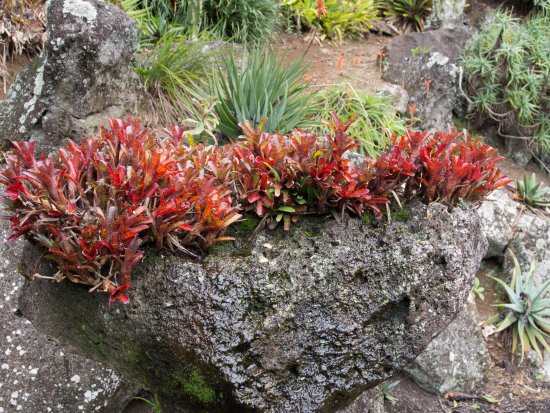
Aechmea: The plants in this genus are mostly epiphytic. One of the best known is Aechmea fasciata or ‘Silver King’, which has long lasting, pretty pink flowers and is often used as an indoor plant.
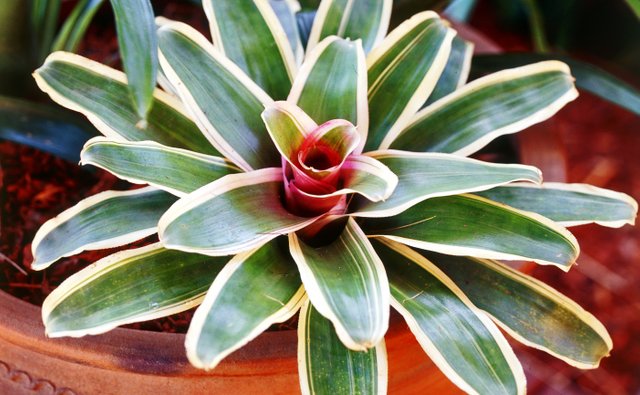
Ananas: The commercially grown pineapple, Ananas comosus is a member of this genus.
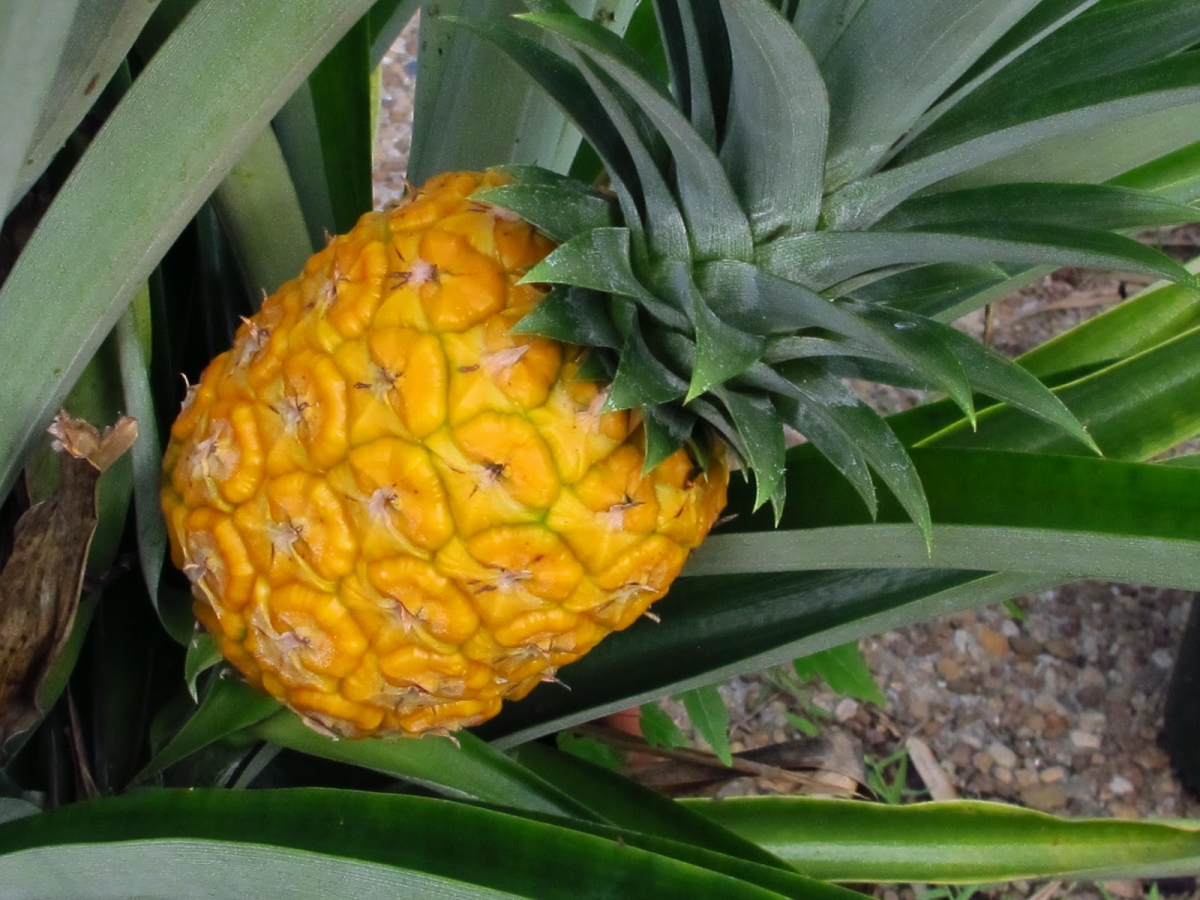
Billbergia: There are around 60 species of Billbergia, which are colourful and well suited to growing in the garden around the base of trees. They clump up quickly to form good flower displays, although the inflorescence (flower head) on some species is short lived.

Cryptanthus: This is a terrestrial group from Brazil, which needs plenty of room for root development. They are best suited to warm climates.
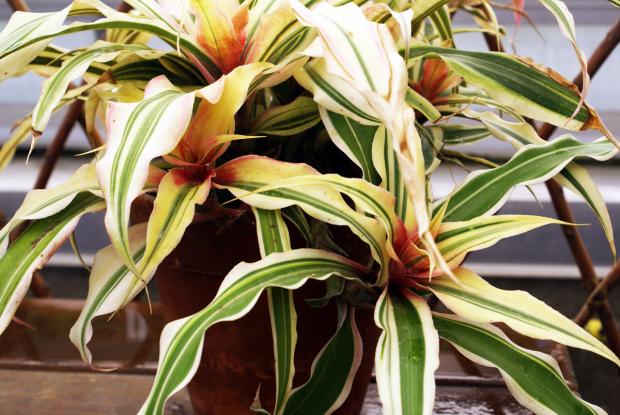
Vriesea: Plants in this genus have interesting and varied foliage, and sword like eye-catching flowers. They are easy to grow and are good bromeliads for beginners to try.
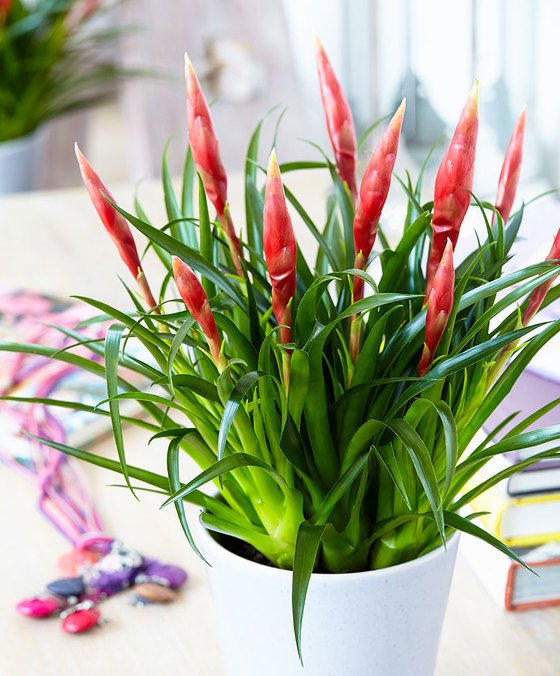
Tillandsia: True air plants, tillandsias range in size from the tiny T. bryoides (1cm or 0.4″) to the giant T. grandis which can grow up to 3 metres (9′) tall. Also in this group is T. usneoides, commonly known as old man’s whiskers or Spanish moss, which looks like spider webs hanging from the trees. Apart from its ornamental uses, this material can be used for padding in upholstery.
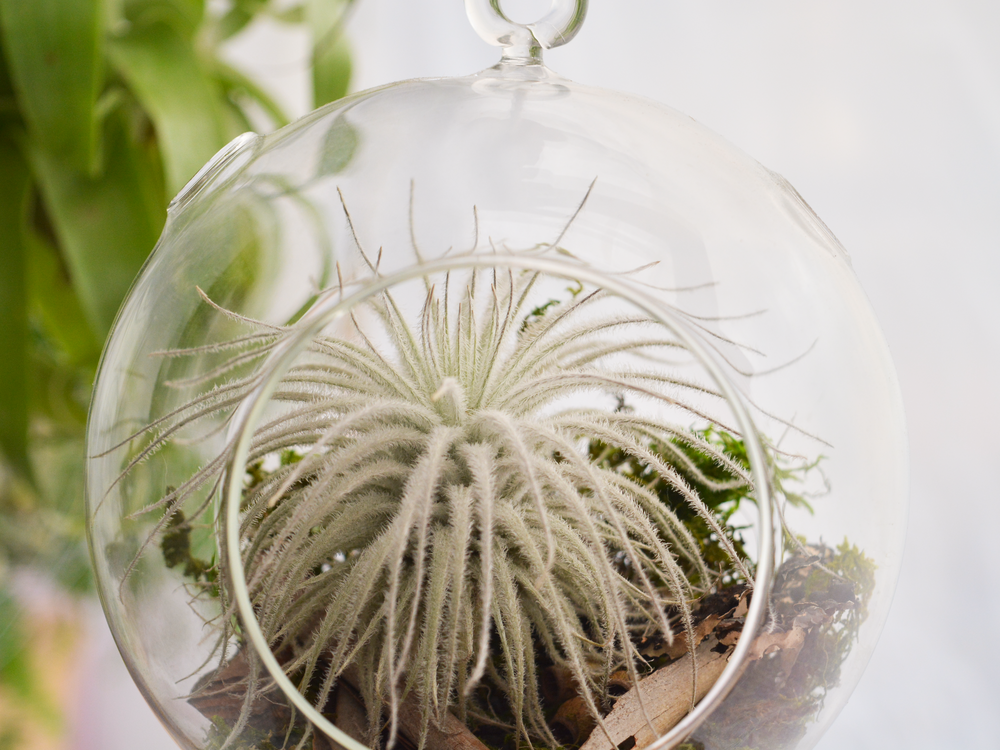
Guzmania: Members of this family have beautiful green foliage and colourful, big open flowers. The coloured flower spikes last many months.
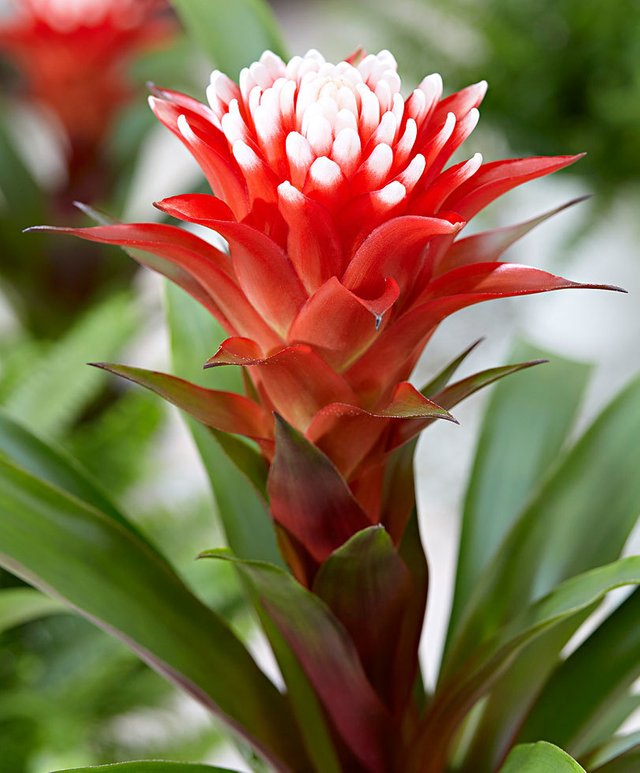
Neoregelias: Neoregelias and their many hybrids are very colourful and easy to grow. The inner leaves of many species turn a brilliant reddish colour just before flowering. The most commonly grown species is Neoregelia carolinae, also known as the ‘Blushing Bromeliad’.
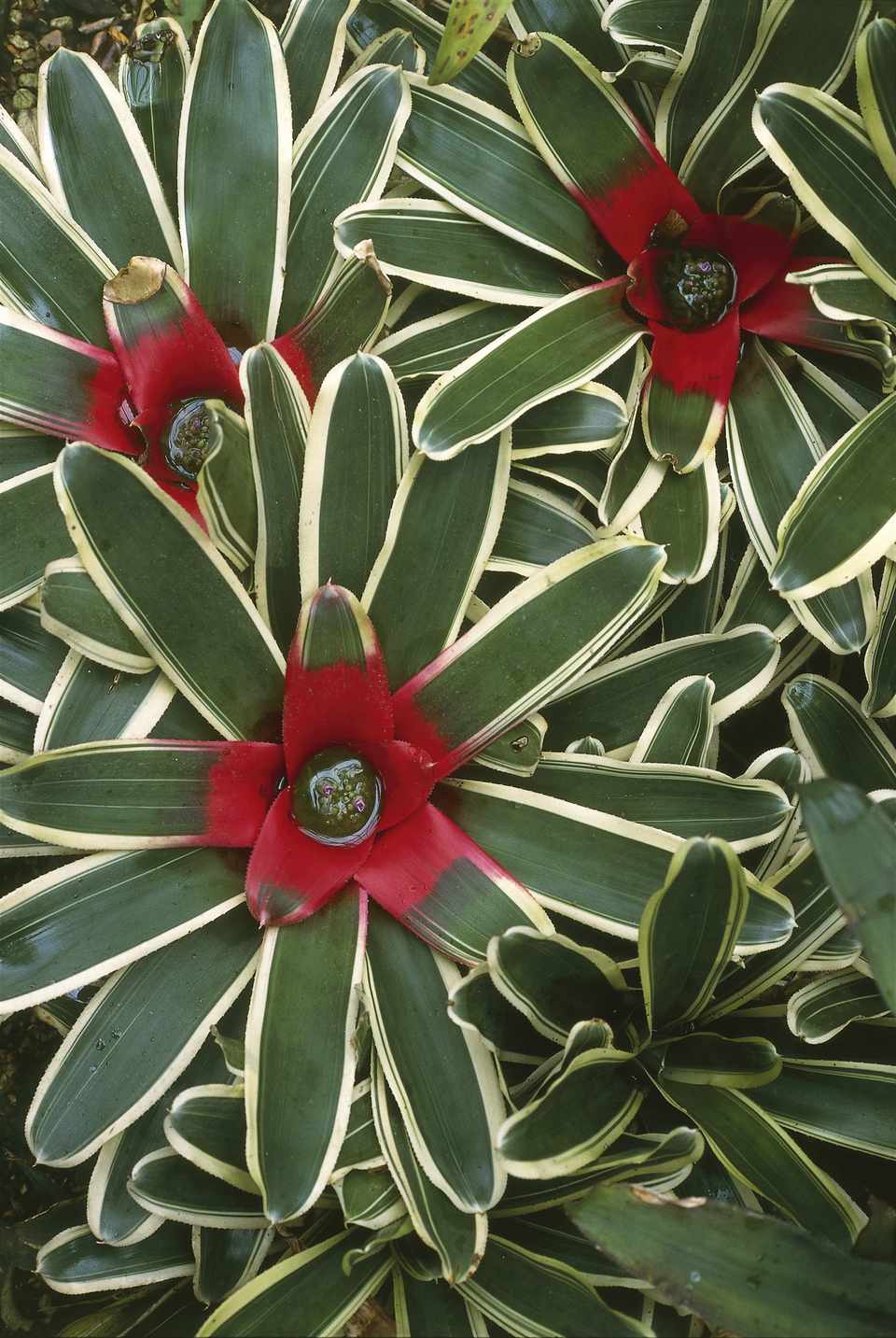
Caring For Bromeliads:
What You Need To Know To Grow Them Indoors
Bromeliads are wonderful houseplants. They're colorful & flowering. Here's what you need to know about bromeliad care to grow them indoors.
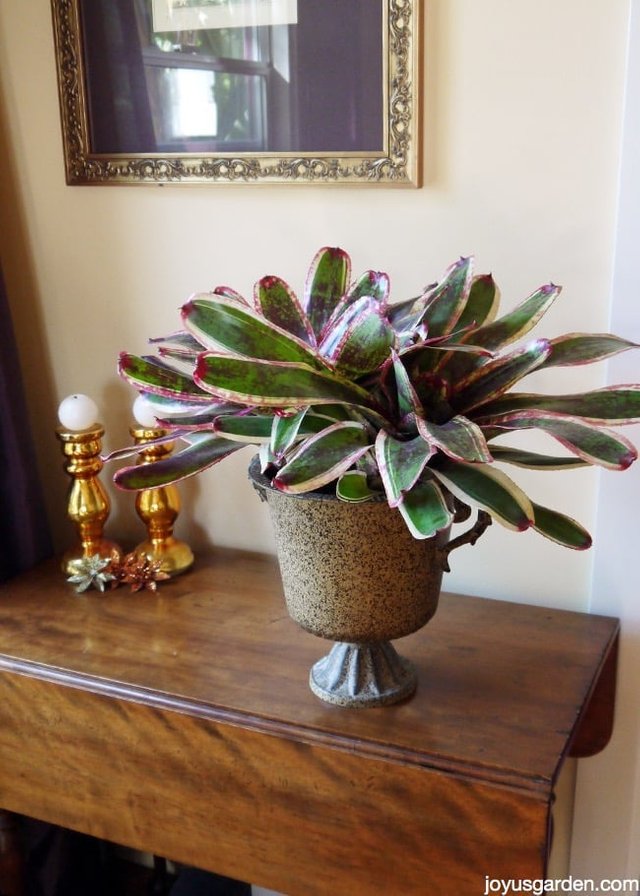
Light:
Like many other tropical plants brought indoors, bromeliads like nice, bright light but no prolonged periods of direct, hot sun. In nature, they grow under the canopies of other plants where it’s bright but direct sun is limited. They’ll survive for a while in lower light conditions but need a fair amount of it to bring out the color and initiate flowering and pupping (their process of making babies).
It’s a bit vague without getting into foot candle measurements but you want your Bromeliad to be somewhere near but not in a window or windows with a west or south exposure. During the darker months, you may have to move it to a spot that gets more light.
Watering:
bromeliads like a good watering every month. Water the growing mix thoroughly & then let it all drain out of the pot. The majority of bromeliads are epiphytes (meaning they grow on other plants, rocks, logs, etc & not in the soil) so never keep them soggy or let them sit directly in water. Keep the cup, which is center part aka the tank or reservoir, 1/4 to 1/2 full of water. Be sure to flush out the cup every month or 2 as bacteria can collect in the dirty water.
Soil / Repotting
Bromeliads love rich, organic matter in their soil but they must have excellent drainage. If you have Cymbidium orchid mix, then you can use this for potting up your Bromeliads too. I use a mixture of succulent & cactus mix, orchid bark, worm castings, & compost. Another good additive is coco coir, which is a more environmentally friendly alternative to peat moss.
Bromeliads have a small root system so you don’t have to worry about repotting them too often. Every 4-5 years is probably just fine & you only need to go up 1 or 2 pot sizes. And, it’s best to not repot them in the cooler months when the roots are resting.
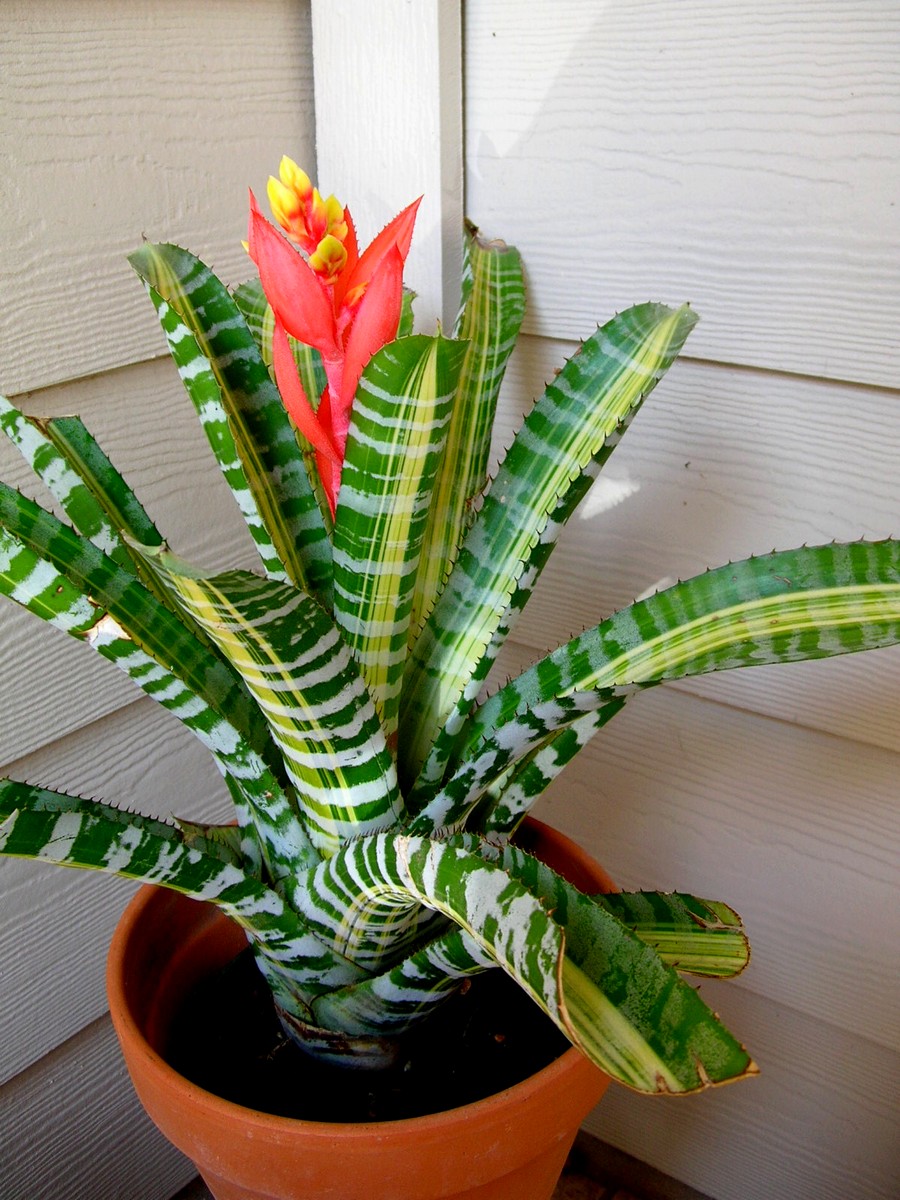
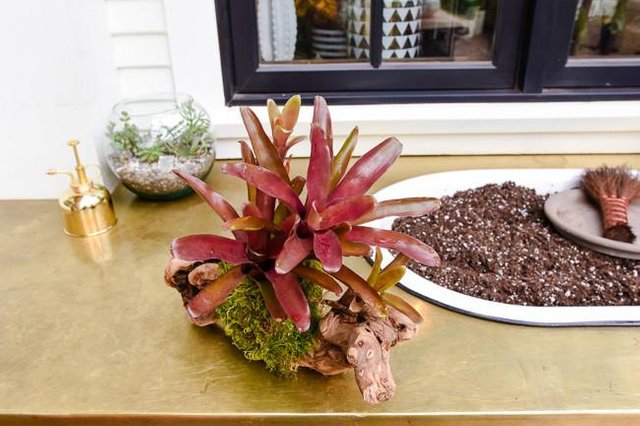
Fertilizing
Bromeliads aren’t fussy & don’t need much if any fertilizing. If you feel the need to feed them, then use a balanced liquid fertilizer or an all purpose orchid food diluted at 1/2 strength in the spring or summer. There are fertilizers which are specially formulated for bromeliads but whichever you decide to use, don’t over fertilize them!
Temperature / Humidity
Temperature isn’t too important as bromeliads tolerate a wide range of temps. Mine grow outdoors & our winter months can get into the 40’s & into the 80’s/90’s in the summer/fall. Humidity is more important as these plants are native to the subtropics & the tropics. If your home is really dry, then mist them a couple of times a week or grow them over a tray filled with water & pebbles to up the ante on the humidity.
Propagation
The easiest way to propagate Bromeliads is by removing the pups (the little babies that appear off the base of the mother plant) & replanting them. If you’re new to this, you might want to wait until the pups are a fairly good size so roots have formed. I’ve also removed pups when they’re smaller & planted them with success. Growers also propagate them by seed but it’s a much, much more tedious process.
.jpg)
Pruning
These plants require very little pruning which makes me very happy. A bottom leaf will occasionally die – simply remove it. If your bromeliad has a flower stalk, like an Aechmea or Guzmania, then prune it off after it has died. At some point the mother plant will die (but don’t be sad, new babies will appear) & you’ll need to cut that off after it completely goes.
Pests:
They’re most susceptible to mealy bugs & scale. You can wipe the mealy bug off with alcohol & a cotton swab. Scale can be removed with your fingernail or a dull knife. Don’t use an oil spray (like horticultural or neem oils) on your Bromeliads as they can smother the plant.
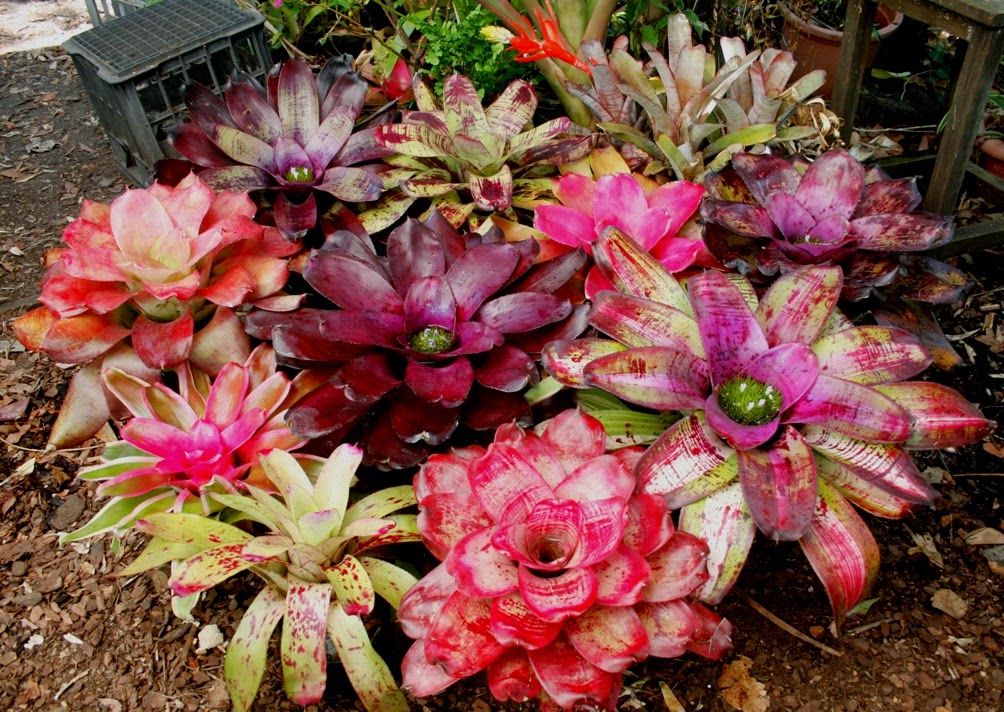
Magoo-2 found a series of multi accounts of a same owner is following your articles to cheat your generous rewards.
Magoo-2 found these accounts are suspicious & can be multi accounts of a single owner. Conclusion is based on last 30 days transactions:
@abdulmanan
@johnjohny
@bablibablu
@mudasraraza
@mudasra
@aliraxa
magoo-2
Check our latest multi comment spam update report
Ok now these are some serious allegations if any law authority is here on steemit platform I want them to file my case against you. I wanna sue you for your lame allegation. you are not more than a pervert for me.
&
Dear Sir @ctrl-alt-nwo you can check my profile and I want you to go through my introduction post, @abdulmanan introduced me with steemit and we are friends, I introduced him to @appics and we invested some little amount in appics ICO, my balance wasn't enough so I paid hard cash to abdulmanan and purchased SBDs, now this sick magoo is saying that this account belongs to abdulmanan, I can imagine his sickness and mentality because I've faced people like him in real life aswell who cant do anything and dont want others to do something better, I am requesting you again to visit my profile Sir.